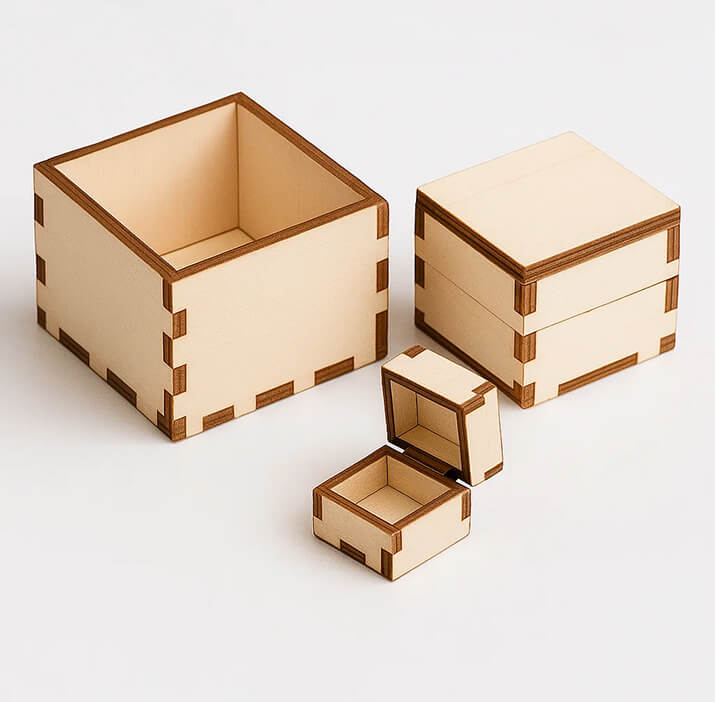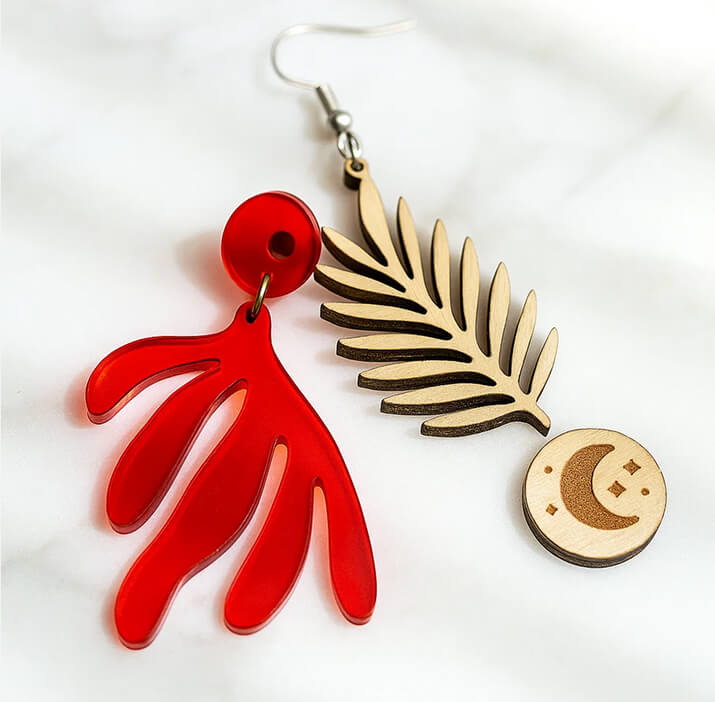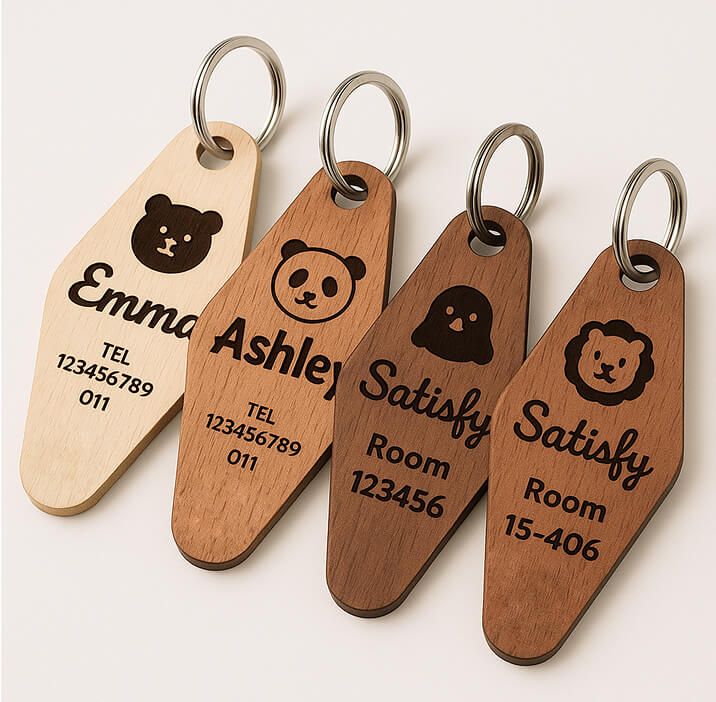![[Laser cut and engrave] Wooden beach blocks](https://image-res.xtool.com/resource/xtool%2Fcommunity%2Fmaking%2F3d1bf4d4-8187-4c68-8f6d-958576e23c64%2FIMG_5538.jpeg?x-oss-process=image/resize,w_1200,h_900,limit_0/interlace,1/format,webp/auto-orient,1)
Wooden beach blocks
Information
I was inspired by wooden square blocks I saw at various hobby shops to create a small set of blocks for our vacation rental property. This project took a fair amount of time since it involved painting multiple blocks with different colors, sanding between coats after drying, then engraving on all sides of the blocks. The results aren't perfect, but I think the final product is pretty fun nonetheless.
Instruction
Step1: Select the words you want
Before doing anything, figure out what you want to spell out with your blocks. I decided I wanted three-letter words related to a beach vacation. The length of the words you're creating will dictate how many blocks you'll need. I had a few in mind, but I'll admit I used ChatGPT to help come up with some more.
On a spreadsheet, list out all the words you want to use in one column. Then create one column for each block. Add your first word to the blocks, putting one letter in each column.
Now look to see if there are other words in your list that use any of those letters. For each of those, add the other letters to the other columns. In my example, for SUN, I'd add S to block 1, U to block 2, and N to block 3. Then for FUN, I'd only need to add an F to block 1 since the rest of the letters are already on the other blocks.
When you run out of repeat letters, go back to adding all three letters to the blocks, but don't always put the first letter on the first block.
Keep going until you run out of space or words. In my example, I didn't need to use one of the spaces on one block, so I decided to put our property name on that side.
It's worth noting that I also tried to use chat GPT to figure out how to optimize the blocks for these words, and it couldn't do it! Every time it left out some of the words.
Once you've accounted for the six sides of each block, look through to see if there are any words you wouldn't want the blocks to spell. For example, I did some shuffling (and rechecking with all the other words) to ensure that S and X would be on the same block to prevent kids from cleverly spelling things to get a rise out of the adults. 😆
Step2: Paint blocks
To create a colorful set of blocks, paint the blocks before engraving. I chose six different coastal colors, using one on each side. If you use multiple colors, take care to not allow your colors to bleed over the edge to other sides. You'll probably want to use multiple coats, allowing to dry between each coat. I also recommend sanding after each coat dries to smooth out any brush strokes. This is the longest part of the project. And you can only really paint three sides at a time in order to hold the block when painting and set it down to dry.
Step3: Set up your project file
Open the sample project file and lay out some cubes in your engraver. You may need to put your engraver on risers or lower your engraving bed so the top of the blocks will be an engravable distance from your laser. You'll want to “secure” the blocks somehow. This is more to establish a consistent location for placing the blocks each time you flip them than to keep them in place. I used a spare strip of wood and some heavy magnets as spacers.
Place one of your blocks so it sits under the auto-measuring point and measure the thickness. If it doesn't work, you'll need to further adjust your engraving bed up or down. Once measuring is complete, your preview should change pretty dramatically.
To set up the project file for your needs, adjust the positioning and size of the squares that are used as framing guides. They should be the same as the width of your cubes' sides.
Once they look aligned by sight, verify them by framing the guide boxes one at a time. Set the first square to Output and everything else to Ignore. Frame and ensure that the laser just grazes all four edges of the first cube. If not, adjust the box and try again. Then move on by Ignoring that box and setting the next to Output…and so on until everything is properly aligned. Now select the Framing layer and set it to Ignore.
Finally, determine the font and size you want to use for your blocks. I went with 140 points on the font we use for our rental property: Seagull Bold.
Step4: Run the project and clean up the blocks
Pick the first row from your spreadsheet and set those letters up in the project file. Center align each letter vertically and horizontally within its respective framing square. Keep in mind that some letters, like Q, may need to be manually aligned vertically so they appear aligned with the other letters. Select the Letters layer and ensure it's set to Output. Similarly, ensure the Framing layer is set to Ignore. Frame the whole job, and it should extend across all the blocks but well within the edges of the blocks.
Process the job, then flip all the blocks. It doesn't really matter how you flip each block, but I chose to have four of the adjacent sides all oriented the same way.
Now take the letters from the second row in your spreadsheet and do it all again—re-centering each within its respective frame before framing and running the job. Keep going until you've processed all six sides.
When you remove the blocks, you'll need to clean any oil residue from the wood off the painted surfaces. Don't use anything like alcohol that would easily degrade or remove the paint. I used a magic sponge that I rinsed repeatedly.
Now stack 'em up and let your family enjoy!




